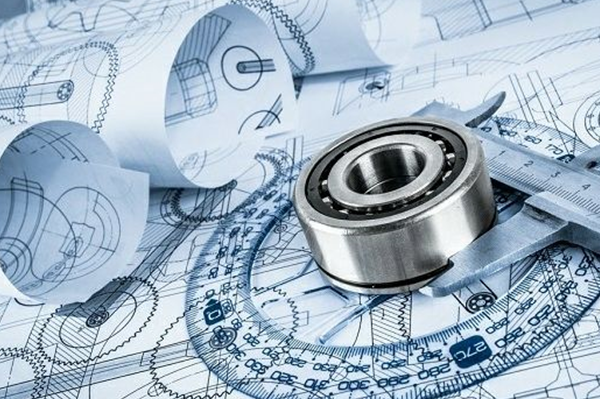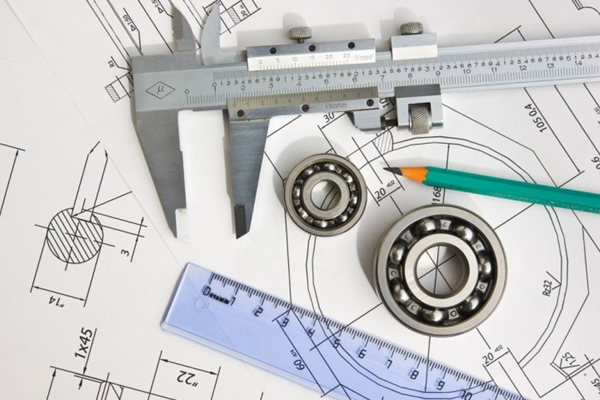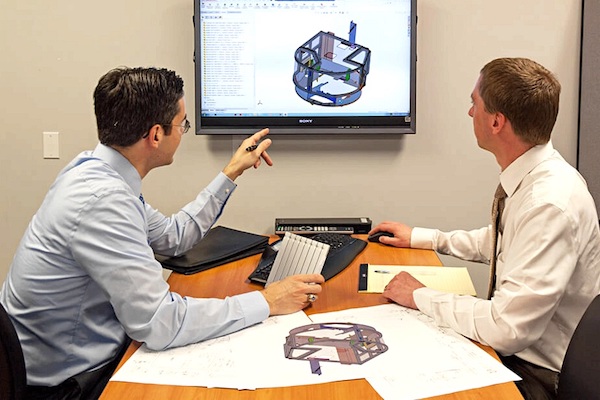Generally, design and engineering considerations comprise various elements or areas that may impact the design, requirements, or operational demands of custom CNC machining service. One of the core considerations in manufacturing processes is tolerance. Adhering to the standard tolerance limits in key design areas ensures the optimal usability and performance of fabricated parts.

What is Tolerance Stack-up Analysis?
Tolerance stack-up or stacking refers to the process of computing several part tolerances together prior to manufacturing. Generally, tolerance indicates the extent to which parts can deviate from stipulated dimensions. For this reason, tolerance stack-ups are essential to address the mechanical or dimensional fit and meet performance requirements.
This engineering analysis helps manufacturers to better understand the impact of the accumulated tolerances on part or component production and to ensure the functionality of the part after final assembly.
Considering and computing tolerance stack-ups before production begins prevents manufacturers from possibly returning to the design stage after advancing to the prototyping stages and helps conserve time and resources. Furthermore, experts compare the overall results from tolerance stack-up computations to tolerancing standards and limits to ensure that the designs of the parts yield precise and accurate components.
Nevertheless, tolerance stack-up analysis requires a systematic technique to reduce iterations when determining the right tolerance values for parts, and this is essentially important when manufacturing parts that require affixing with other parts.
How to Calculate Tolerance Stack
Tolerances are determined using several different methods using ISO (International Organization for Standardization) and ASME (American Society of Mechanical Engineers) standards. It is also possible to calculate tolerances by using GD&T (Geometric Dimensioning and Tolerancing).
Tolerance analysis is a comprehensive analysis that involves a lot of processes, with the aim of calculating the possible combined variations in features and parts. The primary cause of concern for many parts manufacturers is determining the cumulative variation by combining individual tolerances. While there are several methods manufacturers employ in the calculation of tolerance stack-up analysis, two methods are majorly used.
Below, we will examine these methods, how to calculate them, and what materials they’re best for.
Worst Case Analysis
This method of tolerance stack-up analysis involves adding up the specific tolerance values of a part or assembly. When carrying out the worst case tolerance analysis, experts allocate each part tolerance at their limit to the maximum and minimum value, creating the widest possible variation for the considered dimensions. Then, the higher and lower limit is examined to get a view of the allowable tolerance range. Based on this analysis method, the total variation is determined by totaling the absolute values of the tolerance values. Mathematically, worst case analysis is expressed as the following:
Total variation = Tol1+Tol2+Tol3+…+Toln = ΣTi.
Where Ti is the tolerance in equal- bilateral format (+/-Tol).
Above all, the worst case analysis offers information about the part dimension that transcends their respective stipulated tolerance limits. Here, tolerance stack-up analysis deals with the acceptability and not probability limits. This analysis is suitable for sheet metal and plastic parts.
Statistical Analysis
Statistical analysis is based on the bell curve and normal distribution and does not focus on the extreme dimensional limits. Instead, this analysis combines all the probabilities of different dimensions to assess the chances of failure or success of parts. The logic behind this method for determining tolerance stack is that variation in the dimensions of parts is not linear. Each part will have unique dimension variations based on tool wear, material, manufacturing conditions, and operator differences.
Further, statistical analysis is typically preferred for high-volume production in which a little amount of scrap is okay, given the rest (majority) of the parts is within the permitted tolerance range. There are several methods of statistical analysis, but the two most widely used are the Monte Carlo Simulation and the root sum square (RSS) analysis.

Simply put, unlike worst case analysis, statistical tolerance analysis deals with the probability of the parts falling within acceptable limits. Compared to the the worst case analysis method, statical analysis gives tight tolerance. The statistical analysis method offers engineers more design flexibility as they can consider the fact that there are different quality levels in products, and it is extremely unlikely that all products have 100 percent of variation.
Benefits of Tolerance Stack-up Analysis for Design and Engineering
The primary goal of tolerance stack-up analysis is to validate the design and dimensions of manufactured components, ensuring that the assembled final part functions as desired. As such, tolerance stack-up analysis offers several benefits.
Increased Product Quality
Tolerance stack-up analysis helps improve the overall quality of the parts produced. This is by optimizing the key characteristic of the parts, which plays a significant role in product lifecycle management. When products have good tolerance levels, their quality is improved, increasing demands, ultimately driving profits to the manufacturing firm.
Reduction in Line-Stops in Assembling Processes
During the assembling process, workers often stop the production line to assess for defects and repair them immediately as they occur. The sooner flaws are detected, the better. When tolerance stack-up analysis is carried out in the design stage, any defects and flaws in product design soon become evident and can be readily and cheaply corrected.
Finding design flaws at the final assembly process mean operators need a long line-stop in the hope of finding where the flaws are and rectifying them. This usually takes a lot of time and effort and is rather costly. However, if the flaws are detected relatively early at the design stage, simply making changes to the 3D CAD model can fix any lingering issues.
Reduced Costs
There are several costs incurred during the production of parts. With errors and flaws in the production process, these costs are even increased, as extra costs need to go into fixing them. With tolerance stack-up analysis, the product repair cost can be greatly reduced. This is because flaws can be detected at the design stage, which is relatively inexpensive to rectify.
Aside from fixing design flaws, revisions and improvements on design can be easily made with tolerance stack-up analysis. This can allow better efficiency in production, as fewer components will be needed, corresponding to lower costs.
Still on costs, with tolerance stack-up analysis, the costs to inspect parts can also be reduced. This is because this analysis allows for the correct allocation of tolerance values of parts features, which means tolerance values aren’t too small. Therefore, there is no problem of over-specification, which requires high-level inspection.
Reduced Material Use
With tolerance stack up-analysis, only features of parts needed are designed and used. This not only saves costs but also reduces the total materials and scrap parts at the end of the assembly production line.

Conclusion
Tolerance stack-up analysis is a method used in the manufacturing industry to determine the acceptable variations in the gap between the parts in an assembly. This then allows for the optimization of part tolerances.
The two main methods used for tolerance stack-up analysis are the worst case and statistical analysis. The former deals majorly with the acceptability limits without much emphasis on the probability limits of individual parts, while the latter deals with the probability of parts falling within acceptable limits.
